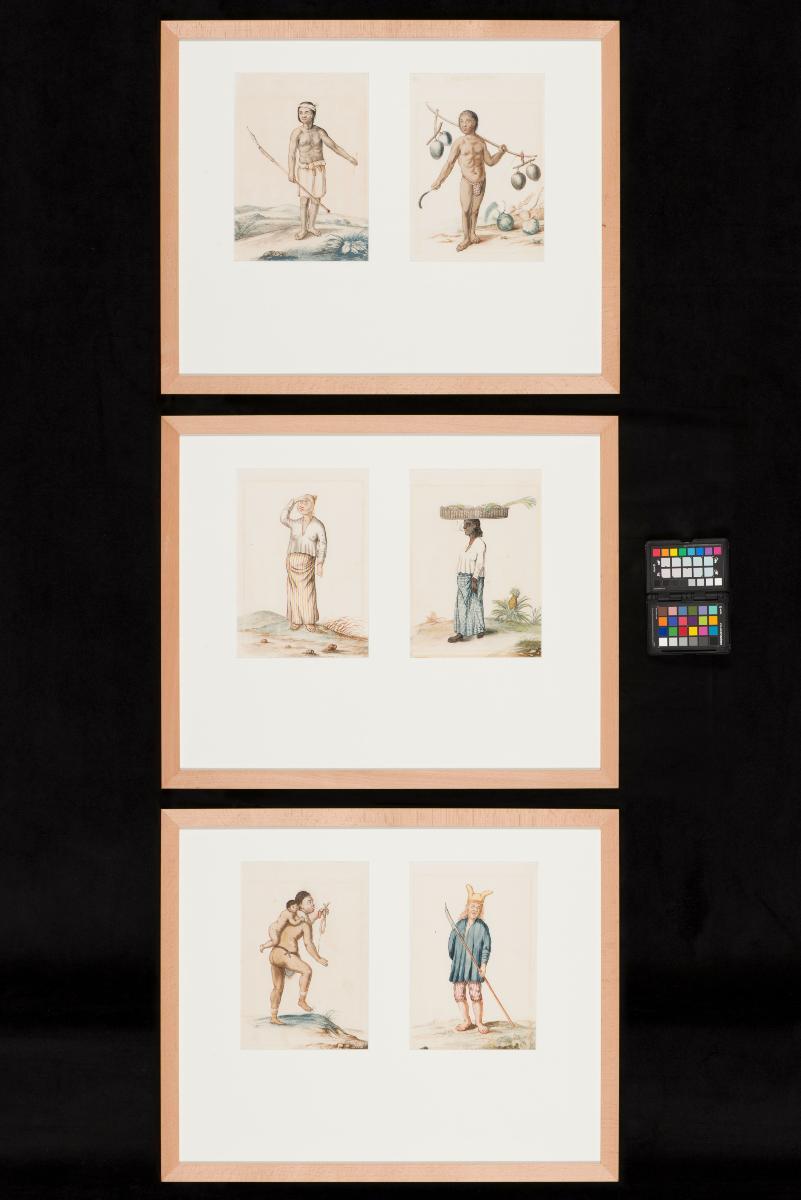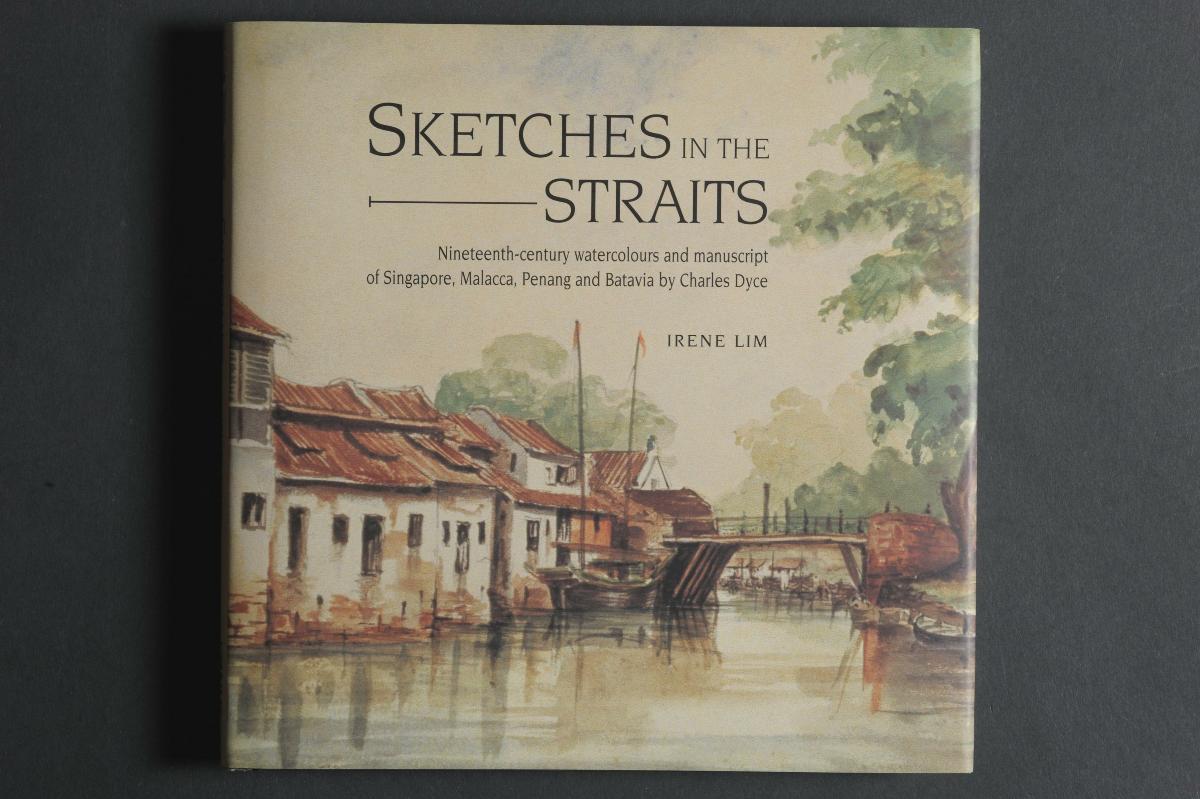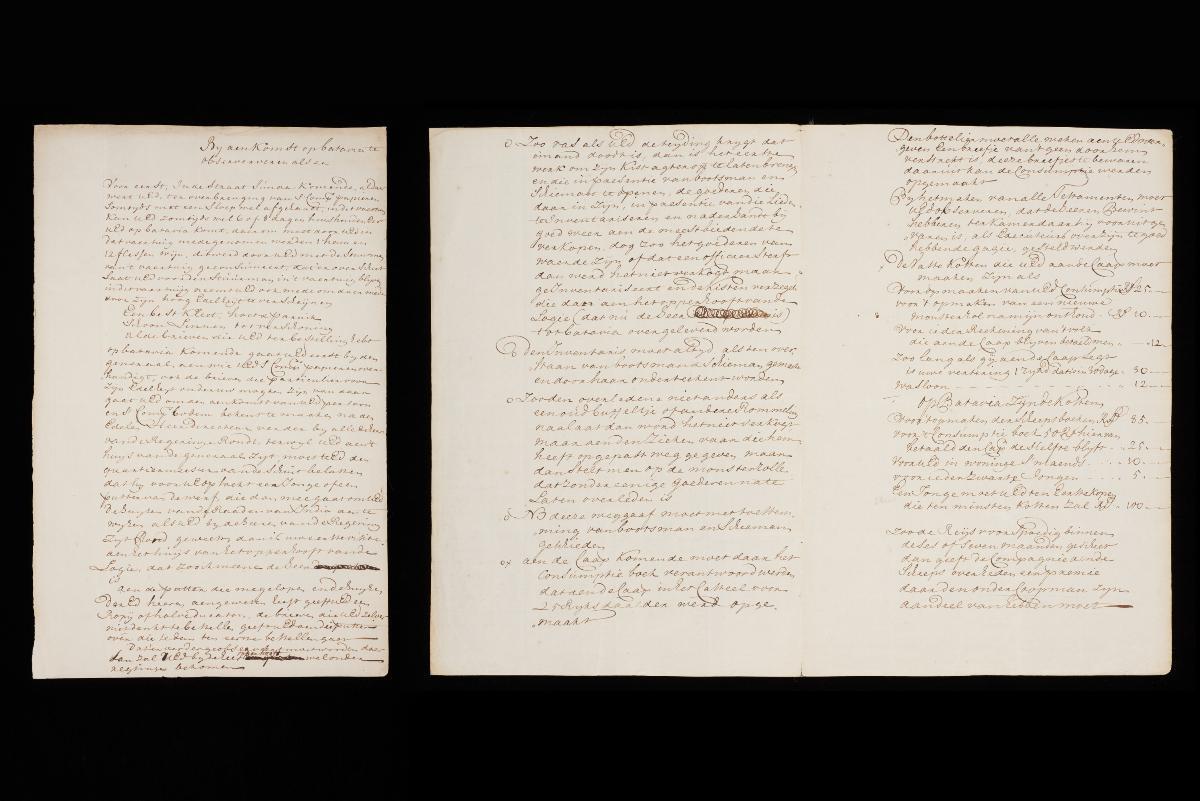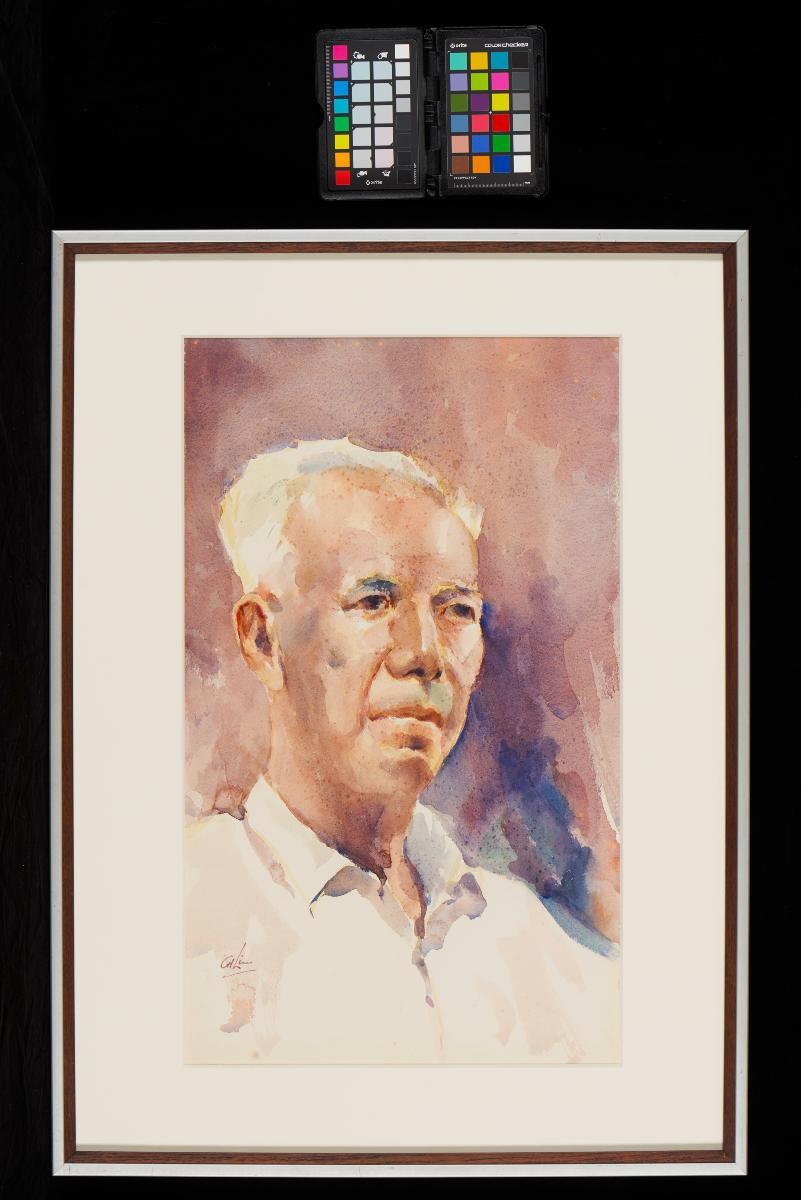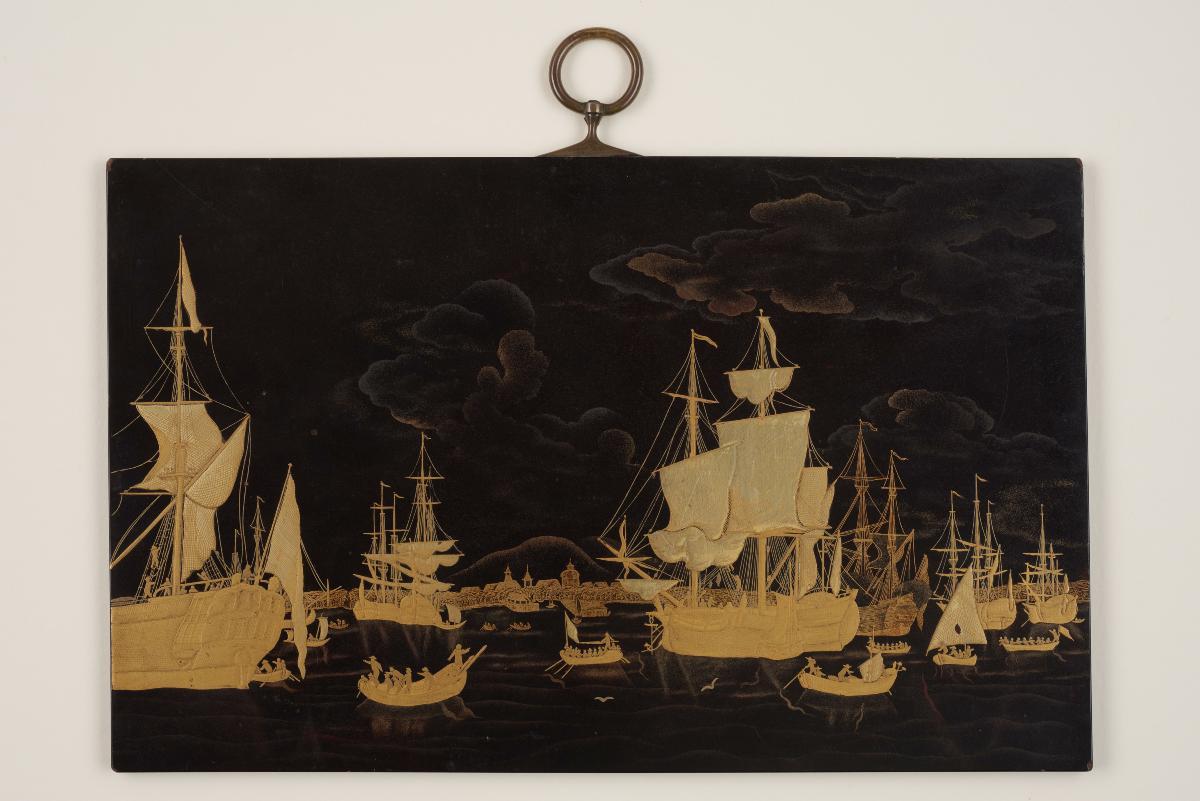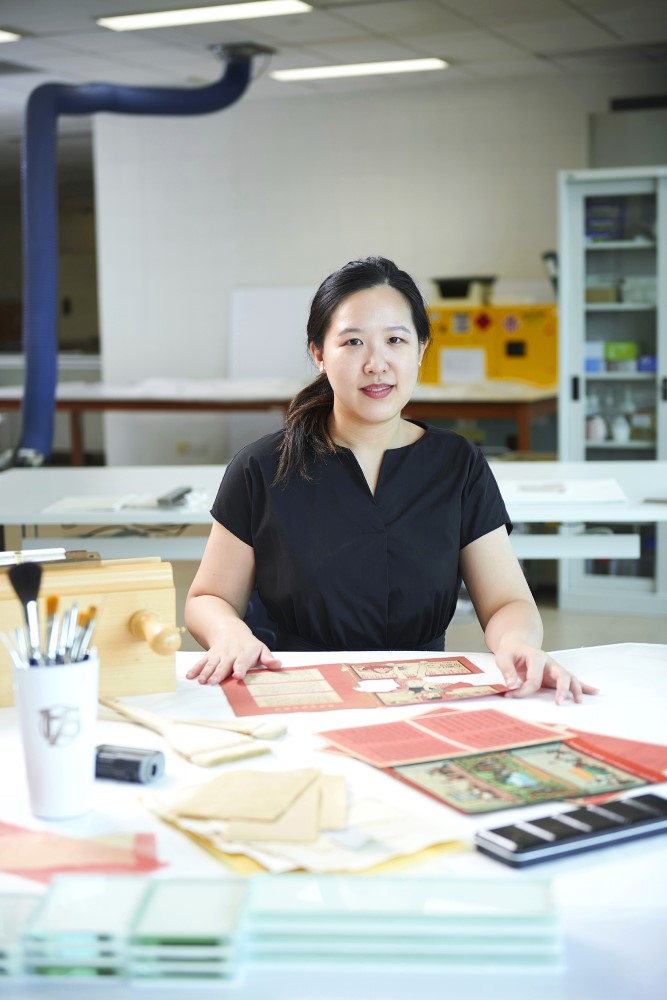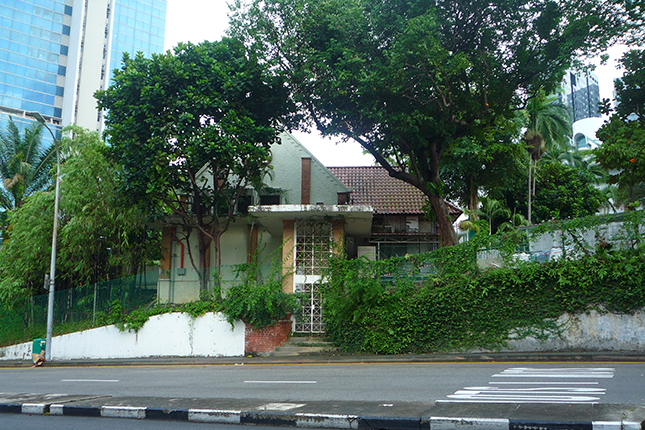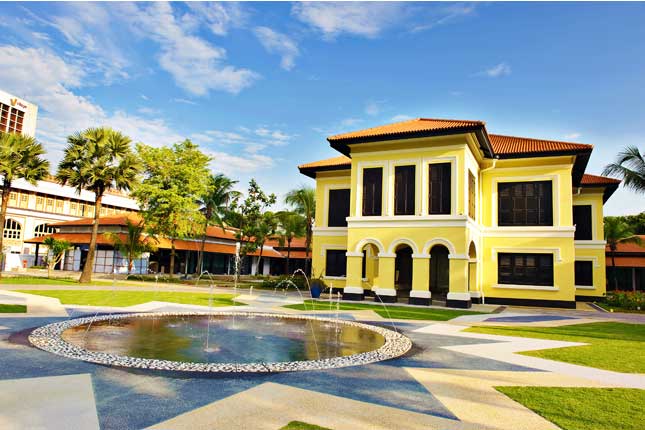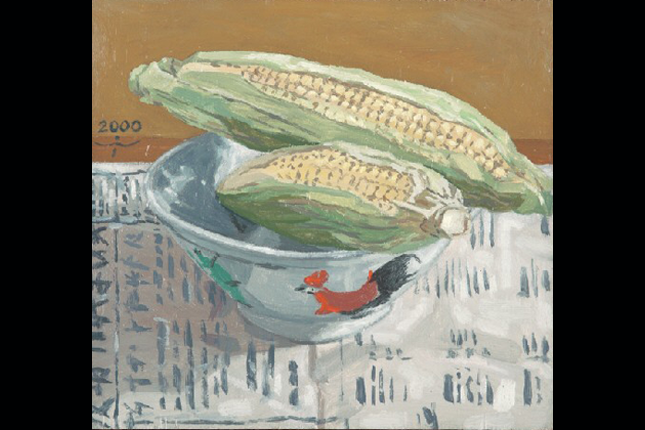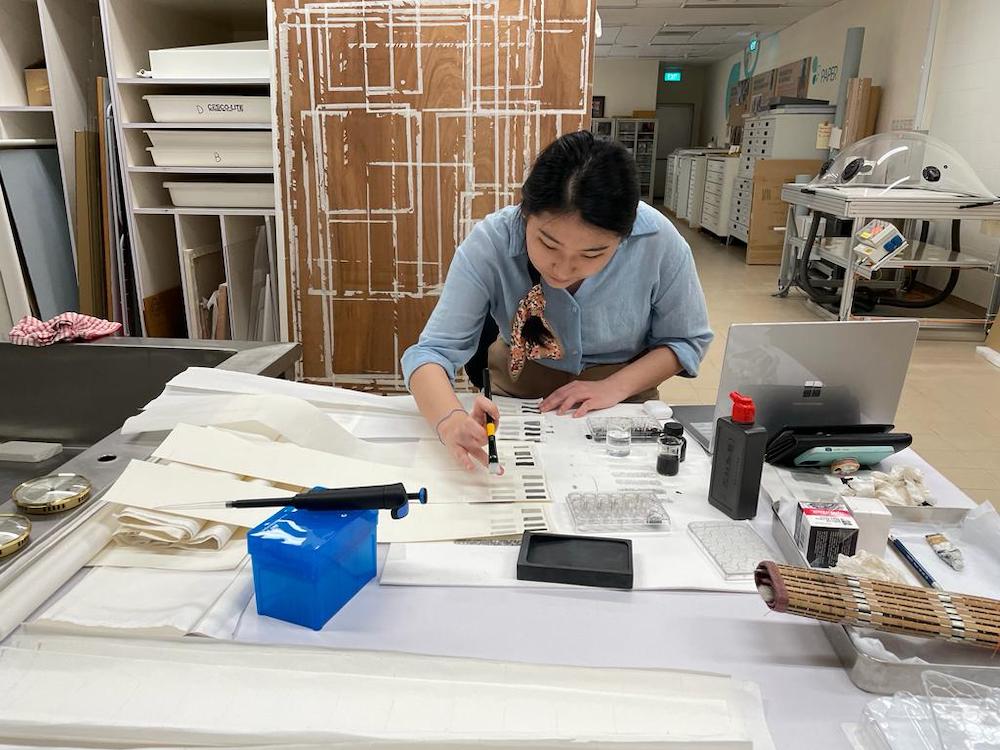This set of 6 watercolour on paper drawings depict Dutch school observations of Natives in the East Indies. Each full-length portrait is a study of the various ethnic groups from Java as well the distinctive mestizo – persons of mixed European and Indonesian ethnic ancestry. It is likely that this set of watercolour drawings are from 17th century. Costumes worn by mestiza women in Dutch colonial towns indicate a clear 17th century style, characterised by a baju with a V-shaped opening for the head, a selendang, and a wrapped skirt of Indian cloth. Listed as an un-authored work of art, elements of the drawing bear strong resemblance to prominent 17th century Dutch artist, Andries Beeckman’s (active 1651-57 Dutch East Indies) watercolour drawings of “A Woman of Batavia”, mid-17th century. A blonde and barefoot mestiza for example, reveals the same composition and formal features as Beeckman’s drawings – Her hair is tied in a chignon and accompanied by curly tresses descending from the side and her body is angled sideways, with her right hand placed upon her head. It is plausible that these drawings are likely to be a copy of Andries Beeckman’s watercolour drawings of the same period.These watercolour drawings depict a diverse community of ethnic groups from Java, as well the impact of Dutch colonialism in the form of mixed race populations and subsequent impact on social and cultural customs and practices. Such portrayals in watercolour are rare and seldom appear in the open market.




